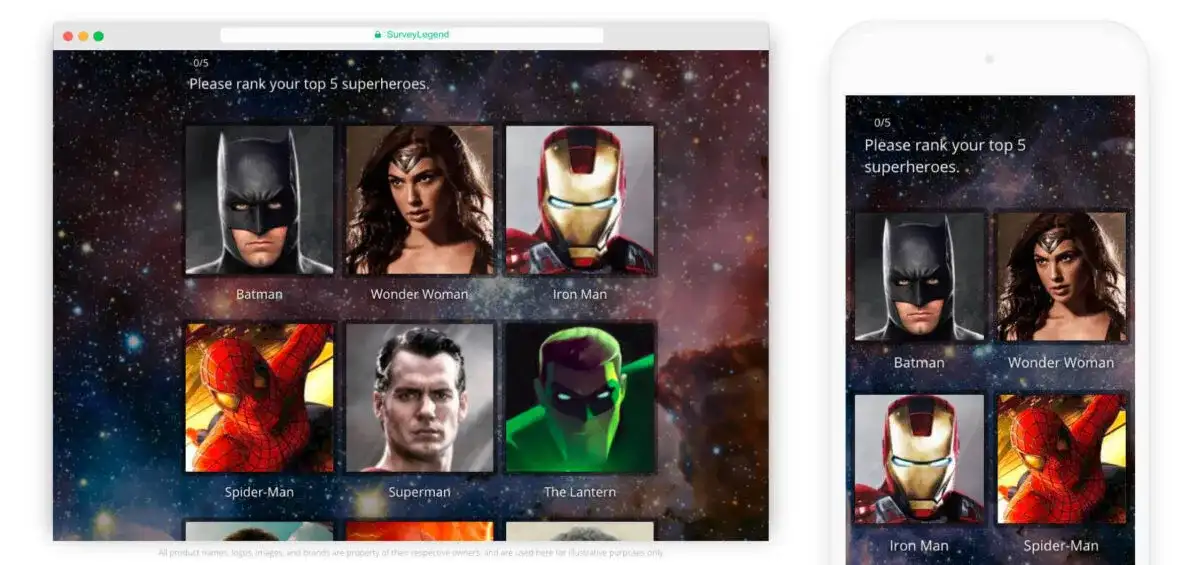Surveys are a wonderful way to gauge the pulse of the public at large, or specific groups of people, such as customers, employees, students, patients, voters, and more. Of course, one of the biggest challenges researchers face is getting people to respond. Without a significant number of responses to any survey, the results can be misleading and not representative of the general consensus, making it very important to boost your response rates. So how do you improve survey results?
Create your first survey, form or poll now!
What is an Average Survey Response Rate?
There are a number of factors at play in any survey that makes it difficult to provide one definitive answer. For example, internal surveys (e.g., employer/employee surveys) tend to have higher response rates than external surveys (company/customer surveys); anonymous surveys tend to have higher response rates than those in which the respondent must identify themselves; and some types of surveys garner more responses than other, such as online surveys vs. telephone surveys.
Genroe, a B2B marketing consultancy company, reports that when factoring all of this in, the average response rate for online surveys is between 10% and 30%, often depending on how engaged the audience is.
An Acceptable Survey Response Rate
To make things easy, let’s say that 20% would be an acceptable response rate for surveys.
10 Ways to Improve Survey Response Rates
Let’s say you emailed out 1,000 surveys, and got 50 back. That’s just 5%—not a very good survey response rate. So what can you do to get 200 surveys back, and at least hit that 20% sweet spot? Here are 10 ways to improve your survey response rate!
1. Create Shorter Surveys.
Let’s face it, most people are busy, and taking your survey is probably not a priority. If you’re lucky enough to get them to bite, keeping it short and sweet is your best chance of getting them to complete it. If respondents begin to feel overwhelmed with questions and see no end in sight to the survey, they’re likely to just quit.
2. Be Transparent.
This is crucial when trying to get someone to fill out your survey. To be transparent, you should inform respondents of how their answers will be used (e.g., to improve your product or service, to uncover challenges in the workplace, etc) and let them know how long the survey should take to complete and/or how many questions it is. You might consider including a progress bar in the survey so respondents know how much longer the survey will take as they’re going.
3. Create Responsive Survey Designs.
Today, people are jumping online using everything from a large desktop monitor to a small mobile phone screen. This can impact how your survey renders, potentially cropping imagery, and cutting off sentences. Responsive design uses various settings to serve different style properties depending on a screen’s size, orientation, resolution, color capability, and other characteristics of the user’s device, rendering a perfect-looking survey regardless of the device.
4. Send Anonymous Surveys.
One of the most common points of survey drop-off is when a respondent is asked to fill in personal information. When respondents have to identify themselves, they may hesitate to take your survey. They may find the questions embarrassing, intrusive, or be concerned about damaging relationships or other repercussions from their honesty. Anonymous surveys tend to get better response rates because these factors are not at play.
5. Offer an Incentive.
If no one is filling out your survey, money is a great incentive! You don’t have to offer much—a few dollars per survey can go a long way toward boosting survey response rates. Of course, you don’t always have to flash cash; Virtual Incentives has other great ideas for incentivizing people!
6. Make Your Survey More Engaging.
By their very nature, surveys are interactive, but are they interactive enough? Today, many researchers are adding visuals and videos to keep respondents engaged. You might also consider using more interactive question styles like rating scales and sliders. This gets respondents thinking outside the multiple-choice box!
7. Use Survey Logics.
By implementing logic flows into your surveys, forms, or questionnaires, you can create smart surveys that intelligently react to respondents’ answers; every type of answer can trigger a different consequence! You can even make an advanced logic flow that has several rules and performs multiple actions.
8. Check Your Survey Questions and Flow.
Questions need to be clearly written and jargon-free so as not to confuse respondents; a confused respondent is likely to become frustrated and drop out. Also, be sure your questions follow a logical pattern. Sequences of questions that jump from topic to topic at random are also likely to confuse and frustrate survey takers. Finally, unless it’s a very short survey, you may consider giving respondents the option to skip questions. Why? Sometimes people don’t know the answer to a question, and as a result, they will either leave the survey or will give false answers which skew your results.
9. A/B Test Delivery Times.
Sometimes, your survey just reaches people at the wrong time. Through testing, you can determine the best days and times to send out surveys. Also, be sure to be cognizant of time zones and geographic location.
10. Send Reminders.
This goes hand-in-hand with #9 above. A non-response doesn’t necessarily mean the person won’t respond, it could simply mean you caught them at a bad time; they may have meant to go back to your survey, but then forgot. There’s nothing wrong with sending one or two reminder emails to encourage them to complete the survey before moving on.
Conclusion
Are you getting very low or just average response rates for online surveys? By following the ten tips outlined above, you can begin to increase your rate of return on surveys! Of course, a good survey response rate also requires a good survey. That’s where SurveyLegend comes in.
SurveyLegend is a global leader in survey design, having worked with hundreds of major companies such as Sony, Samsung, Pepsi, Lego, L’Oréal, and many more. Using our beautiful, pre-designed surveys, you can catch people’s attention and capture their responses. Our surveys are engaging and responsive, with the option to use visuals, survey logic, and much more. Don’t wait—get started for free with SurveyLegend today!
Have a tip that slipped our minds? Share any ideas you have to improve survey response rates in the comments!
Create your first survey, form or poll now!
Frequently Asked Questions (FAQs)
One of the biggest challenges researchers face is getting people to respond.
Many factors go into survey response rates. For example, employer surveys tend to have higher response rates than customer surveys, and anonymous surveys tend to have higher response rates than non-anonymous surveys.
The average response rate for online surveys is about 20%.
A few ways to improve survey response rate is to keep surveys short and anonymous, offer an incentive, being transparent about how the data will be used, and sending reminders.



